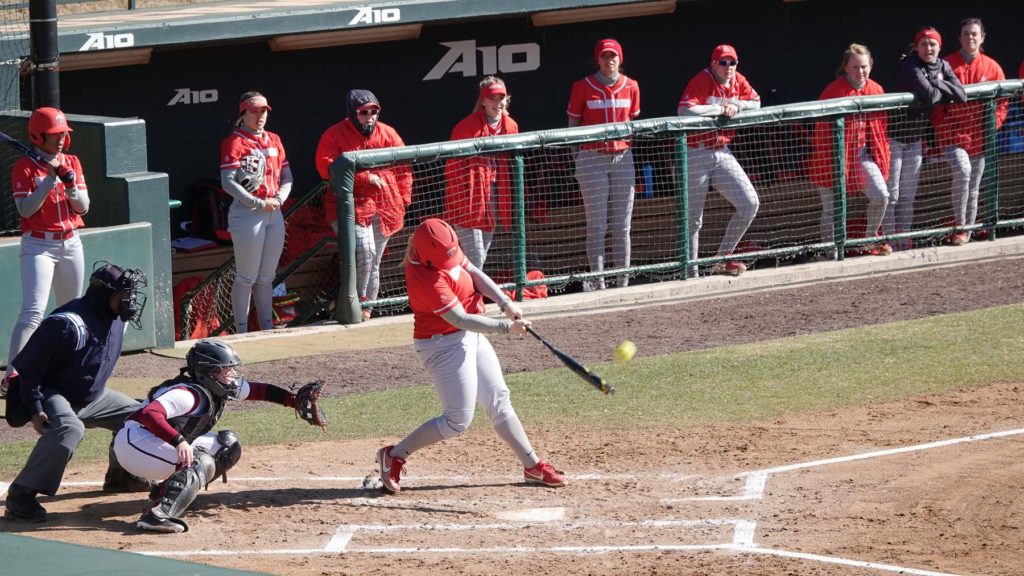A strong, powerful core is crucial for baseball and softball players looking to enhance their performance and prevent injuries such as oblique strains. The core serves as a link between an athlete’s lower body and upper body, allowing for energy transfer between the two, which is vital for generating high throwing velocities and bat speeds.
In this article, learn three core exercises for baseball and softball that will help improve hitting power and throwing velocity
Key Core Exercises for Baseball & Softball Players
Pallof rotations, medicine ball chops, and medicine ball side tosses are exercises designed to improve core stability, core strength, and teach proper weight transfer and rotation during swinging or throwing motions.

This which will result in higher swing and throwing velocity for baseball or softball – something every player needs!
Exercise 1: Pallof Rotation
Pallof rotations focus on core stability and proper weight transfer during rotational movement. To begin, set up a cable machine with the pulley positioned around chest height. Assume an athletic stance perpendicular to the cable.
Extend your arms straight out in front of your chest, ensuring they align with your chest. Rotate and lean towards the pulley/weight stack while maintaining tension on the cable. As you rotate, transfer your weight to your inside foot (the one closest to the pulley/weight stack) and lift the heel of your outside foot.
Once fully rotated, bring your outside foot back down while keeping your hips and shoulders square to the pulley. Shift your weight back into the outside foot, allowing your hips to turn, and then bring your arms through. Remember to rotate “from the ground up”, starting with the outside foot, then the hips, followed by the shoulders and hands.
Perform 3 sets of 6-8 reps each way.
Exercise 2: Medicine Ball Chop Circuit
Med ball chop circuits target anti-rotational core stability, which is an important aspect of rotational power development. The core must be strong enough to stabilize the spine and decelerate the hips and torso, which allows energy to be transferred up the kinetic chain into the arms.
Begin by assuming an athletic position with your feet slightly wider than shoulder-width apart, and a slight hip hinge. Hold the medicine ball out in front of you and move it quickly from shoulder to shoulder without allowing your hips to rotate.
The goal is to resist rotation and maintain stability. Perform side-to-side chops and diagonal chops, keeping your feet flat, core braced, and glutes tight throughout. Focus on moving the ball through the biggest possible range of motion without allowing the rest of your body to move.
Perform 3 sets of 6-10 reps each way.
Exercise 3: Medicine Ball Side Toss
Med ball side tosses are used to build rotational power, and will take advantage of the strength and stability built through pallof rotations and med ball chop circuits. Start with your front foot slightly open and your back foot parallel to the wall. Load your weight onto the back leg, lift the front foot, and coil your hips. Uncoil as you move forward, allowing your front foot to land open.
Once your front foot has landed, rotate your pelvis followed by your torso, and throw the ball into the wall with maximum force. Ideally, you should shift your weight into the front foot upon release and catch the ball as it rebounds off the wall. Avoid bringing the back foot forward too early or over-rotating. Proper rotational deceleration of the torso is vital to ensure the ball returns directly to your hip.
Perform 3-4 sets of 4-6 reps with 4-8 lb medicine balls.
All of the above exercises are easy to perform and will help increase batspeed and throwing velocity in both baseball and softball.
Sign up For Early Work Baseball & Softball Strength Training Today
It’s the best program for baseball and softball players – sign up and start your free trial today!
Sign up for Softball Below

Sign up for Baseball below
